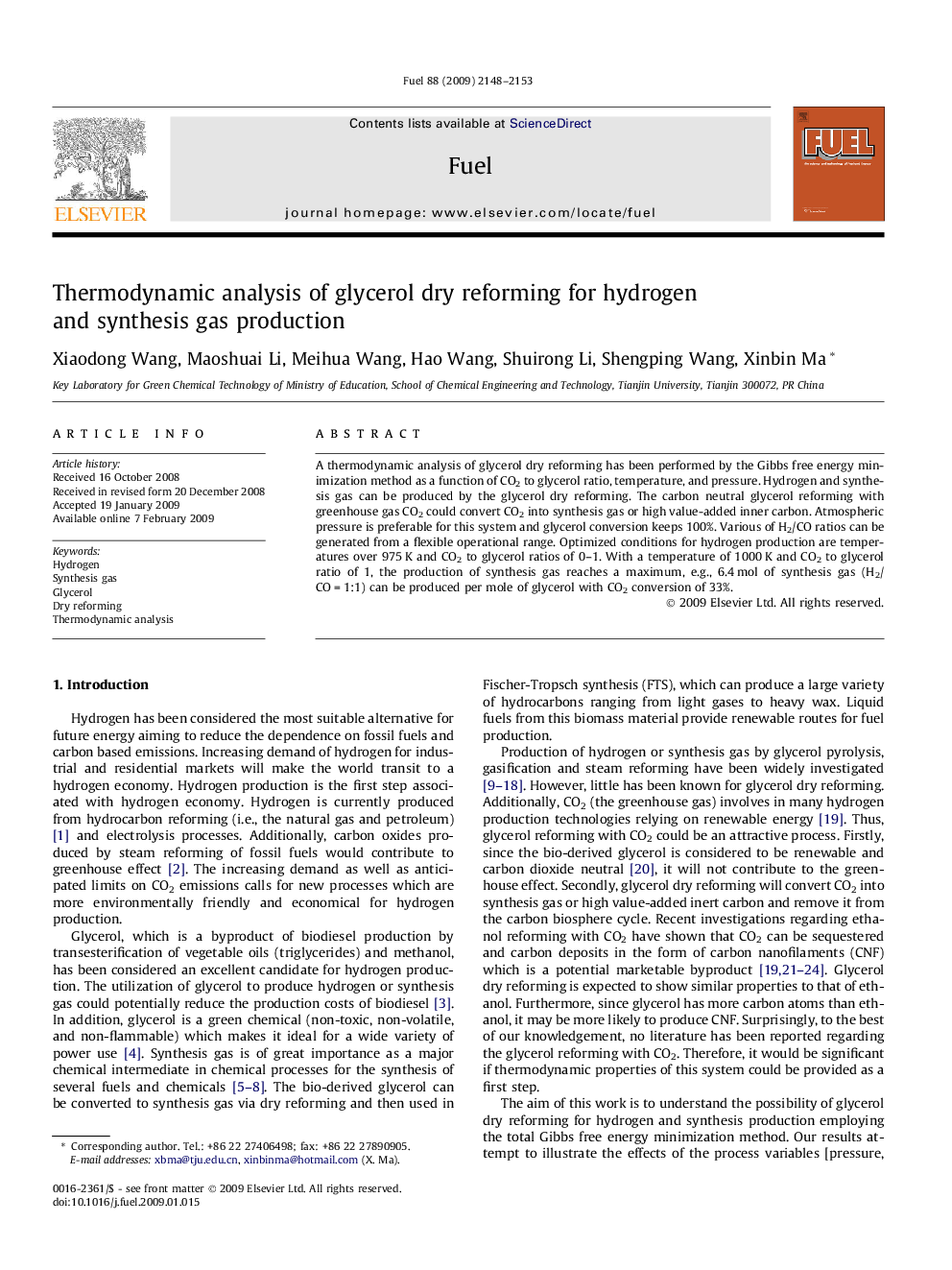| Article ID | Journal | Published Year | Pages | File Type |
|---|---|---|---|---|
| 206702 | Fuel | 2009 | 6 Pages |
A thermodynamic analysis of glycerol dry reforming has been performed by the Gibbs free energy minimization method as a function of CO2 to glycerol ratio, temperature, and pressure. Hydrogen and synthesis gas can be produced by the glycerol dry reforming. The carbon neutral glycerol reforming with greenhouse gas CO2 could convert CO2 into synthesis gas or high value-added inner carbon. Atmospheric pressure is preferable for this system and glycerol conversion keeps 100%. Various of H2/CO ratios can be generated from a flexible operational range. Optimized conditions for hydrogen production are temperatures over 975 K and CO2 to glycerol ratios of 0–1. With a temperature of 1000 K and CO2 to glycerol ratio of 1, the production of synthesis gas reaches a maximum, e.g., 6.4 mol of synthesis gas (H2/CO = 1:1) can be produced per mole of glycerol with CO2 conversion of 33%.
